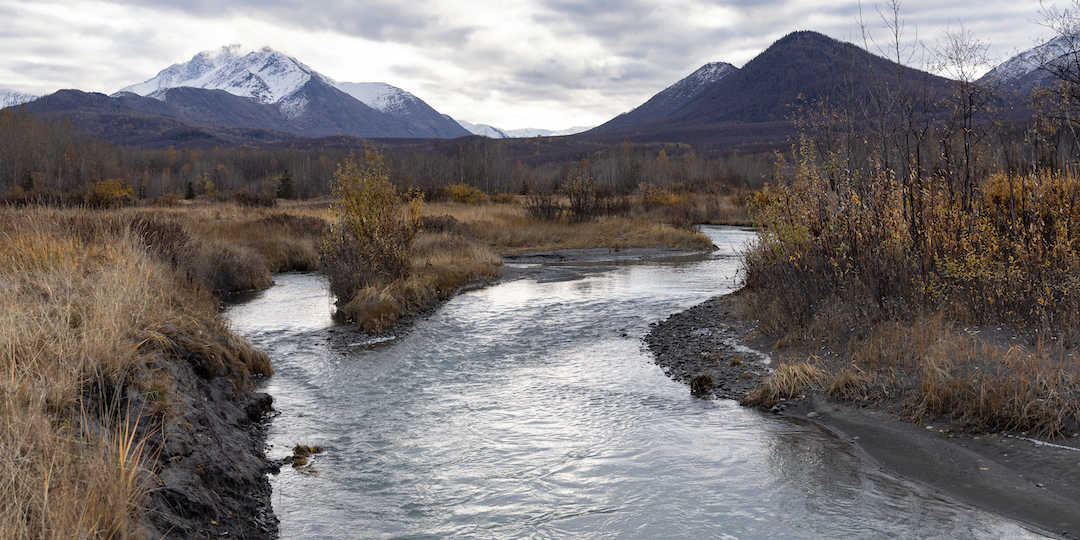This fall, for the first time in nearly a century, water in Eklutna Lake was allowed to flow its historic path down the Eklutna River and into Cook Inlet. The owners of the Upper Eklutna Dam (Chugach Electric Association, Matanuska Electric Association and Municipal Light and Power) released water from the dam at Eklutna Lake for just over three weeks. The temporary water release was part of a scientific study to determine a course of action to address the project’s impact to fish and wildlife. The agreement between the federal government and the utility companies who purchased the Eklutna Hydroelectric Project from them, legally obligates the owners to begin implementing a mitigation plan approved by the governor to remediate the upper dam’s impacts by 2027.
With water’s temporary return, the Eklutna River was front-page news again for the second time in recent memory. In 2018, the river captured headlines across the country following the removal of the defunct Lower Eklutna Dam farther downstream that had been abandoned, blocking salmon migration since the 1950s. The removal effort was led by Eklutna, Inc., The Conservation Fund and the Native Village of Eklutna, and supported by a $7.5 million fundraising effort. After the dam removal, adult and juvenile salmon were observed in the Eklutna River upstream of the former dam removal site. These fish were determined to reach their native spawning grounds, even though there was not enough water to support the trip. Returning water to the Eklutna River permanently is the next step in making sure these fish can return to Eklutna Lake.
The Eklutna River historically hosted robust populations of all five species of wild Pacific salmon that are of significant subsistence and cultural importance to the Eklutna people. Following construction of the lower dam in 1929, which blocked fish passage and fractured the river system, and the second dam at the outlet of Eklutna Lake in 1955, which diverted the river-bound water and turned off the flow, salmon have struggled and returned in greatly diminished numbers, barely existing. Residents of the Native Village of Eklutna have suffered the loss of salmon, the majority of whom were only recently treated to their first glimpse of what a flowing Eklutna River could afford them.
For those who have been closely engaged in the mitigation process, advocating for the restoration of the river, the temporary water release was a success. Sediment that had piled up before the lower dam was transported downstream by the flowing water, diverse salmon habitat reappeared, and no impact was observed to downstream bridges or other infrastructure.
The only downside from water release was knowing the gate at the lake outlet would close, and the river would once again run dry. The flows were minimal and their duration brief, but with them we saw a glimpse of the future that is possible for the Eklutna River, a future that starts with permanent flows and salmon returning to Eklutna Lake.
This winter, the upper dam’s owners will review data collected from the first year of research, and draft plans for a second year of field studies. They will seek input from interested parties before proposing mitigation measures to be reviewed by the public and approved by parties to the mitigation agreement, which includes the State of Alaska, the utilities and a handful of federal agencies. Now is the time for us to collaboratively craft a healthy future for the Eklutna River for all Alaskans.
By Aaron Leggett, president of the Native Village of Eklutna. Kyle Foster, CEO of Eklutna, Inc. Curtis McQueen, a former CEO of Eklutna, Inc. Eric Booton, Eklutna Project Manager for Trout Unlimited. Brad Meiklejohn, Alaska State Director of The Conservation Fund. Kyla Kosednar, Advocacy Director for The Alaska Center.
Originally posted by Anchorage Daily News
November 27, 2021
Share this Post

